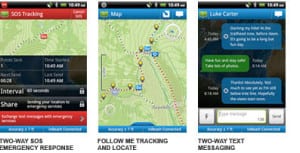Latest News
[Via Satellite 04-07-2014] The Alaska Flight Services branch of the United States Federal Aviation Agency (FAA) has certified Maine-based Delorme’s inReach satellite communicator for its Enhanced Special Reporting Service (eSRS). The eSRS program is unique to Alaska, and provides an additional level of safety for general aviation (not commercial) pilots. Until recently the program exclusively used satellite-tracking devices from Spidertracks and GlobalStar’s Spot. Increased demand from pilots of small planes and other general aviation aircraft led Alaska Flight Services to evaluate additional satellite devices.
“Alaska Flight Services’ customers have, over the past several years, been asking for increased flight service support of satellite/GPS Tracking Devices such as Spot, Spidertracks and DeLorme inReach,” the eSRS Special Work Group said in a briefing. “These requests are for service in addition to Automated Flight Following.”
Aircraft of all types are typically covered when over land, but Alaska’s largely unpopulated expanse lacks the same level of terrestrial infrastructure found in the rest of the continental United States. While evaluating Delorme’s inReach communicator, the eSRS Special Work Group tested the device — which operates on Iridium’s network — in Anchorage, Fairbanks, Deadhorse, Ketchikan and Valdez.
“Alaska has its own unique set of challenges for aviation; one of the biggest problems in Alaska is lack of radar coverage,” Kim Stiver, vice president of marketing at Delorme told Via Satellite.
The FAA does not track every flight in Alaska, as they are not all covered by Very-High-Frequency (VHF) radio. Pilots are required to file a flight plan so that search and rescue teams can look for them in the event of an emergency. Satellite products have found growing interest in the state, which has one of the highest populations of general aviation pilots in the country.
“Private companies continue to develop and refine satellite communication devices that have the functionality to provide pilots tracking, emergency alert notification, and in some cases texting capabilities,” said James Miller, manager at Alaska Flight Services. “Pilots and aircraft owners are encouraged to participate in this program while operating within the state of Alaska. The alerting features of these devices, combined with a flight plan, may provide benefits when operating in Alaska.”
Delorme’s inReach is a text-based satellite communicator with a GPS component. Each text message includes coordinates relaying the user’s exact position. inReach uses Iridium’s short burst channel in order to consume less bandwidth and reduce the cost of use. According to Stiver, this also helps ensure messages are sent and received quickly.
“We wanted the device to be widespread and consumer-affordable,” she said. “Sat-phones are extremely expensive because satellite data transfer is very expensive. To carry voice data over the satellite network takes up an incredible amount of bandwidth, which is basically what you end up paying for when you talk. Short burst data is miniscule by comparison.”
As an emergency device, inReach also comes with an SOS feature that immediately alerts Flight Service, sometimes through the International Emergency Response Coordination Center (IERCC). Search and rescue personnel can then communicate by text with the individual. DeLorme also provides various tracking plans that can provide GPS updates every 10 minutes, two minutes or 30 seconds.
“Our first device was $250, and our newest device is $300,” said Stiver. “Most sat-phones start at $700 or $800 and up just for the hardware, and then satellite voice calls are extremely expensive. Our basic plans start at $11.95 per month. It’s much more accessible to the general public … that’s why we went with non-voice.”
Get the latest Via Satellite news!
Subscribe Now